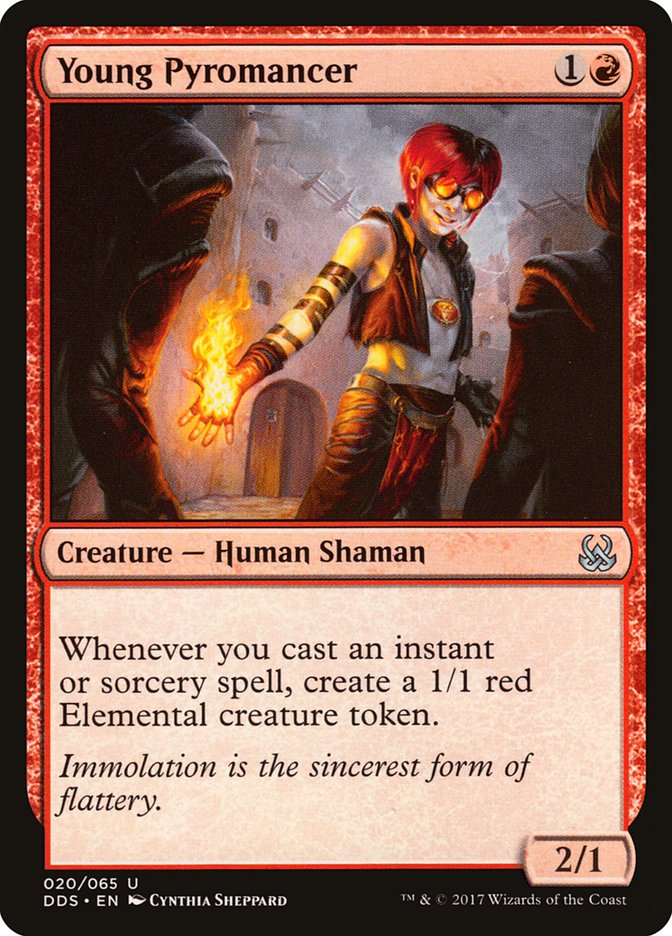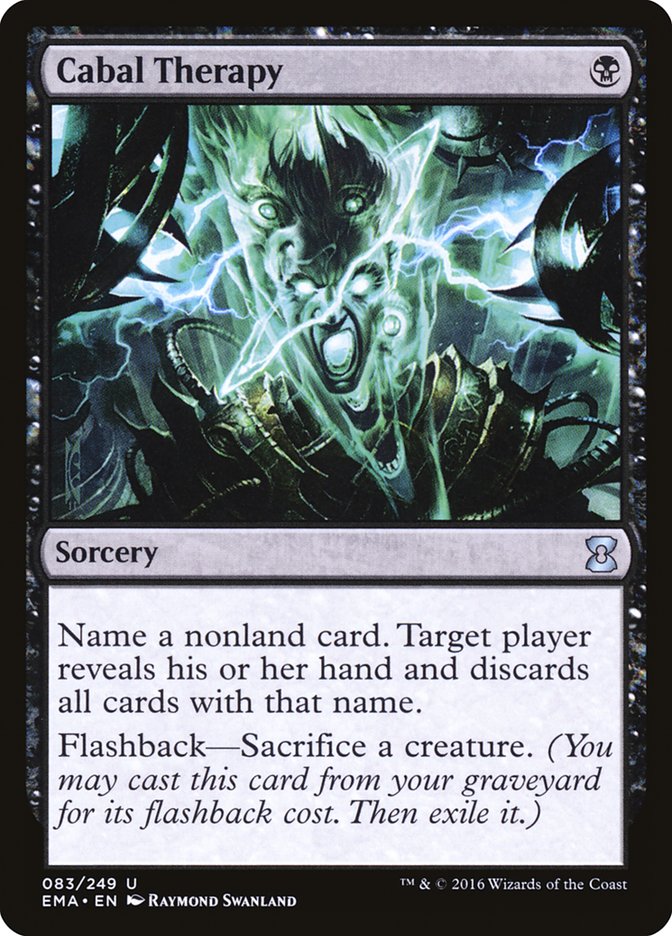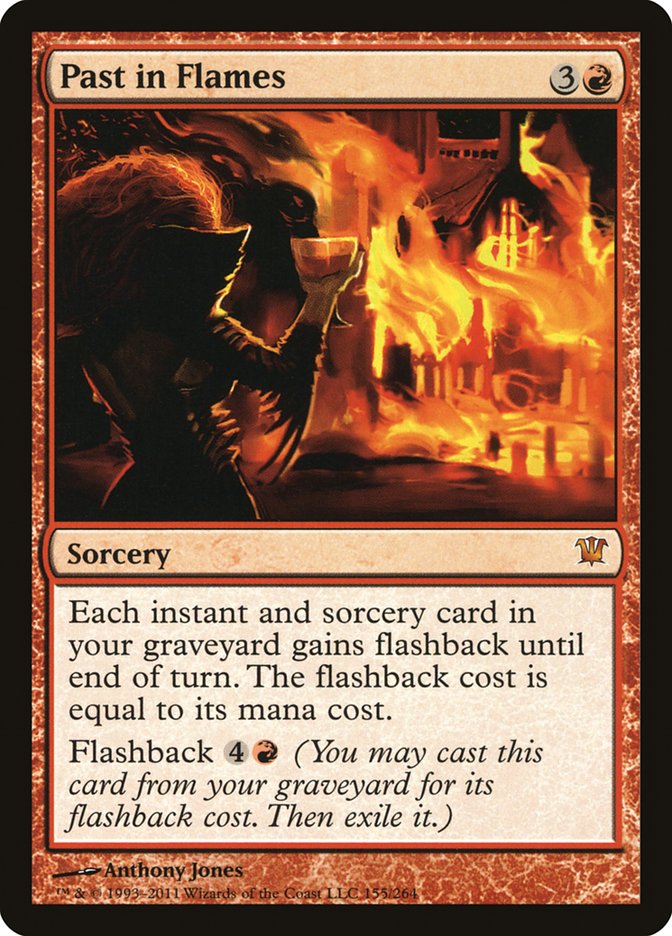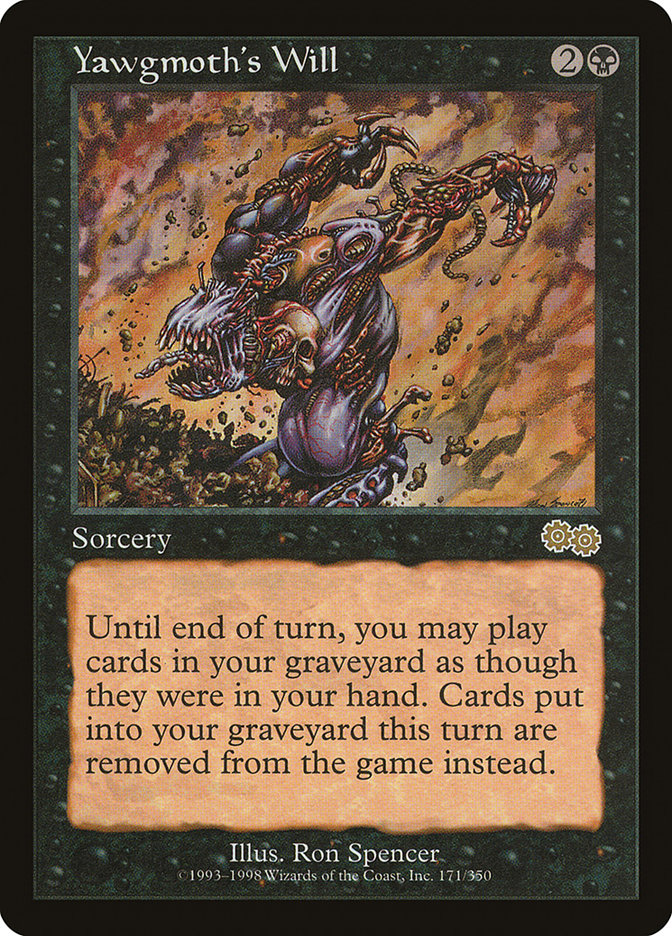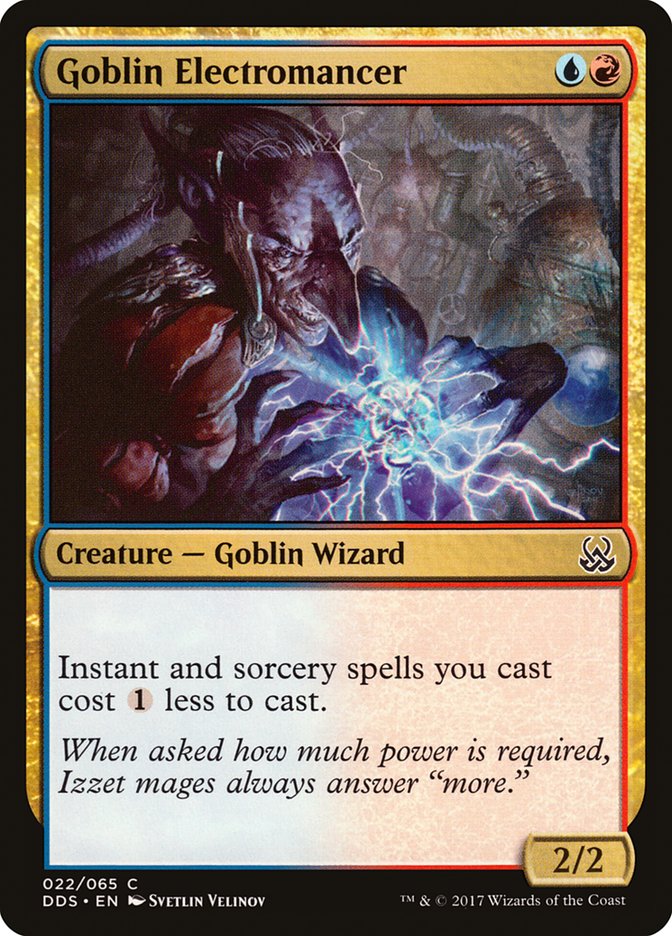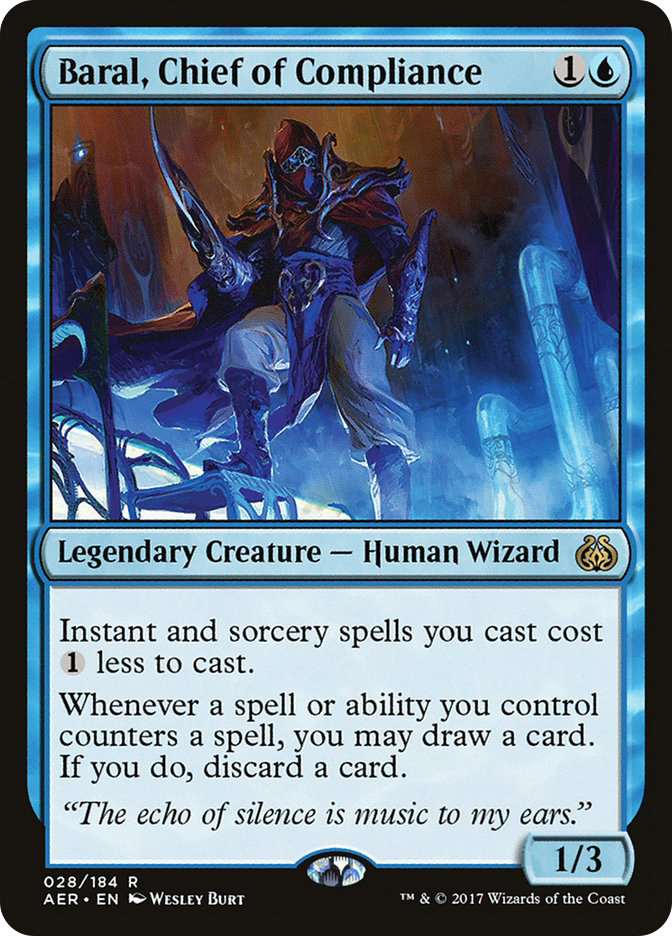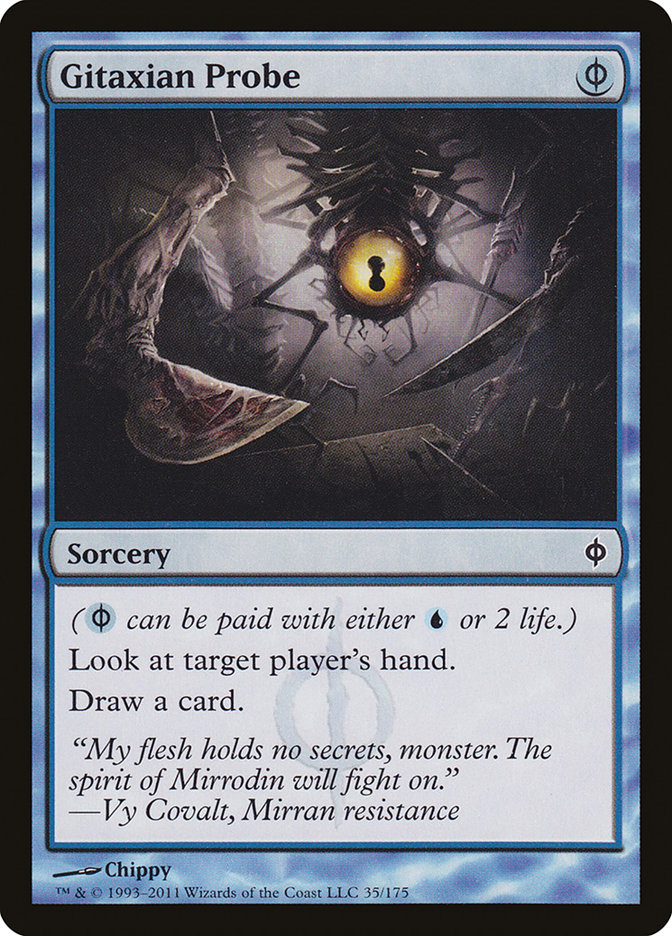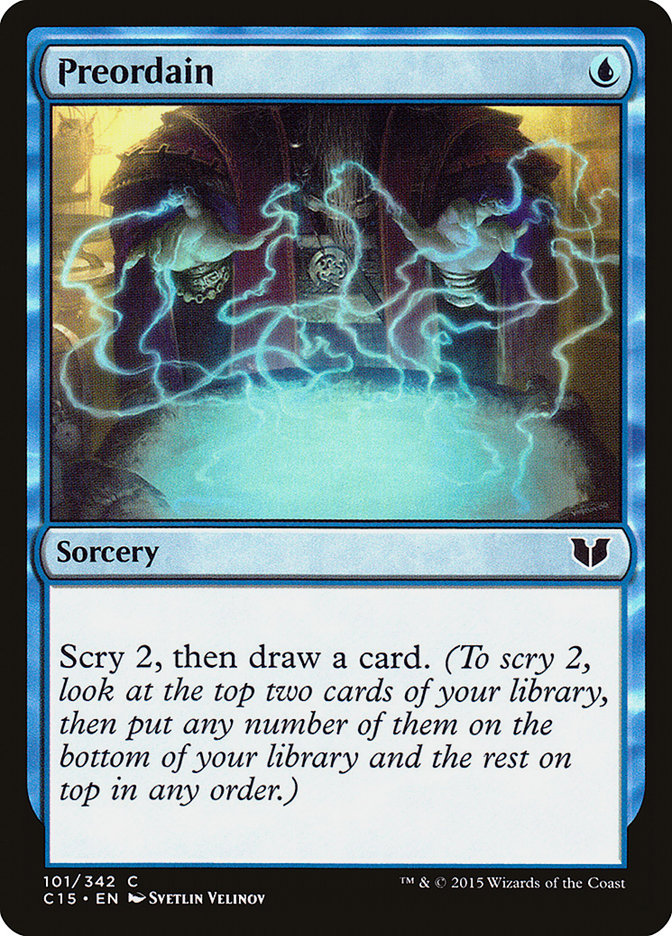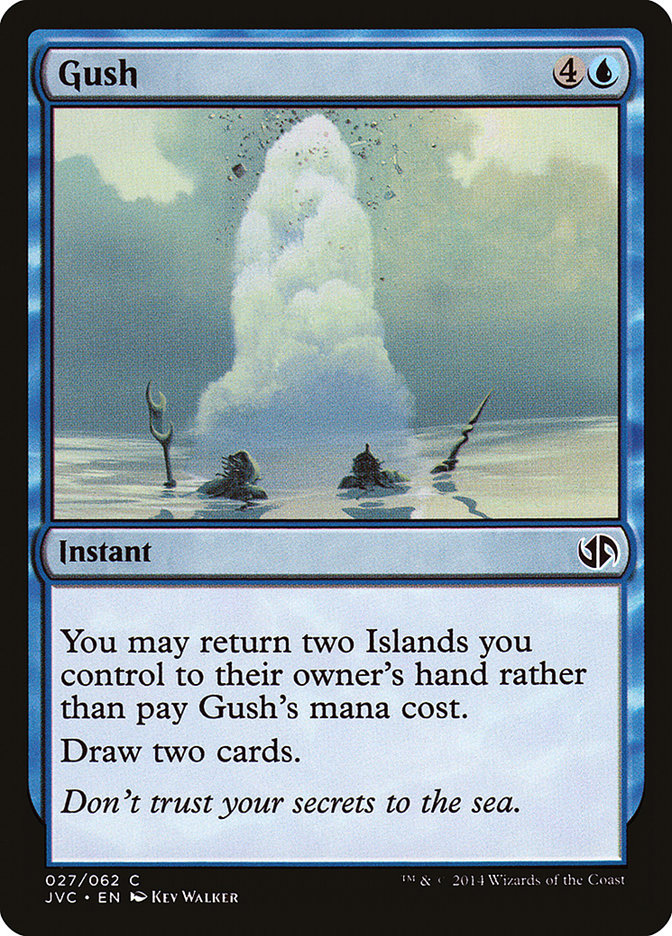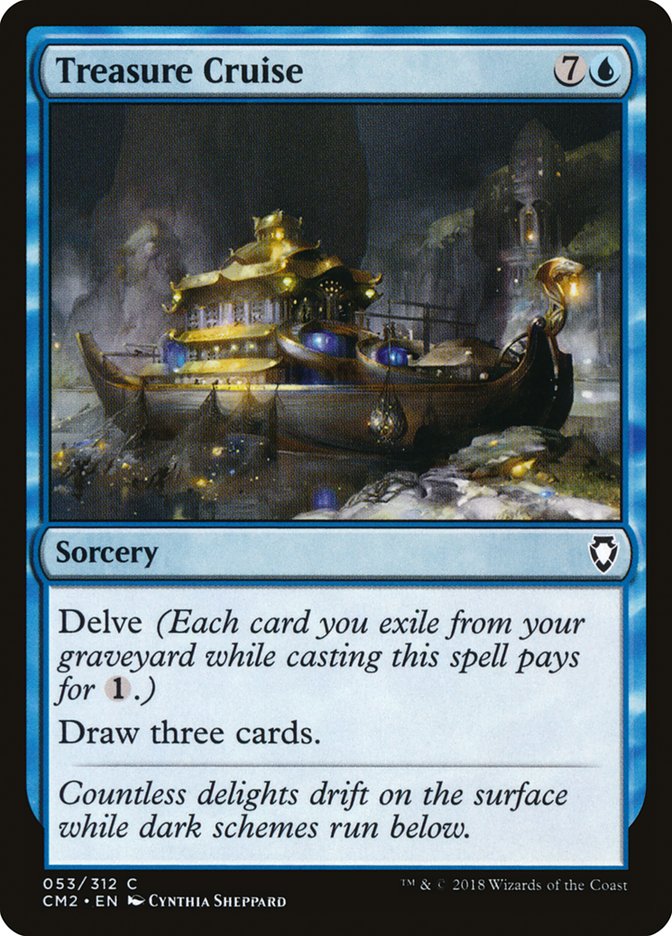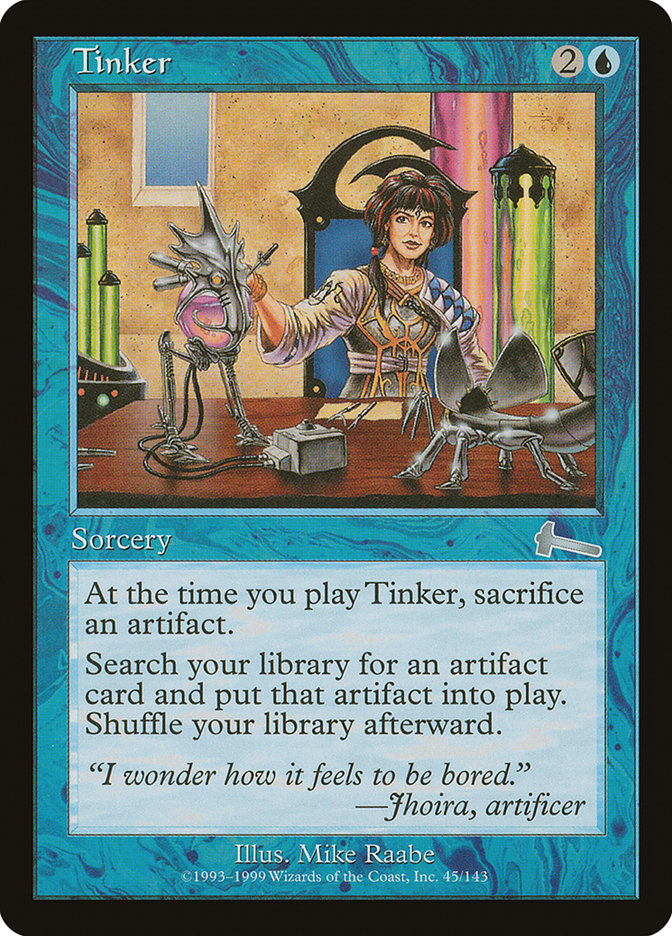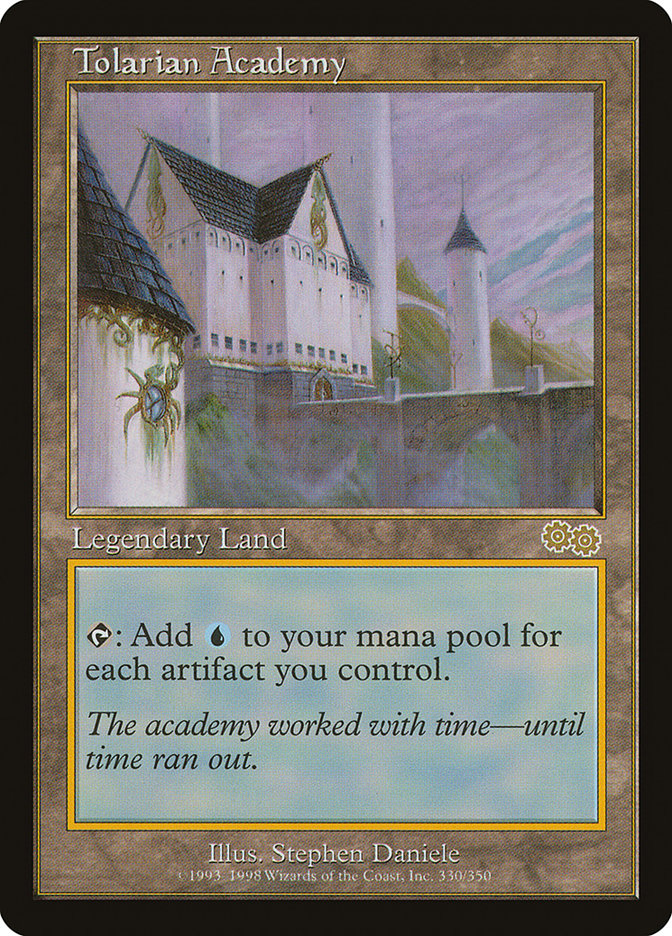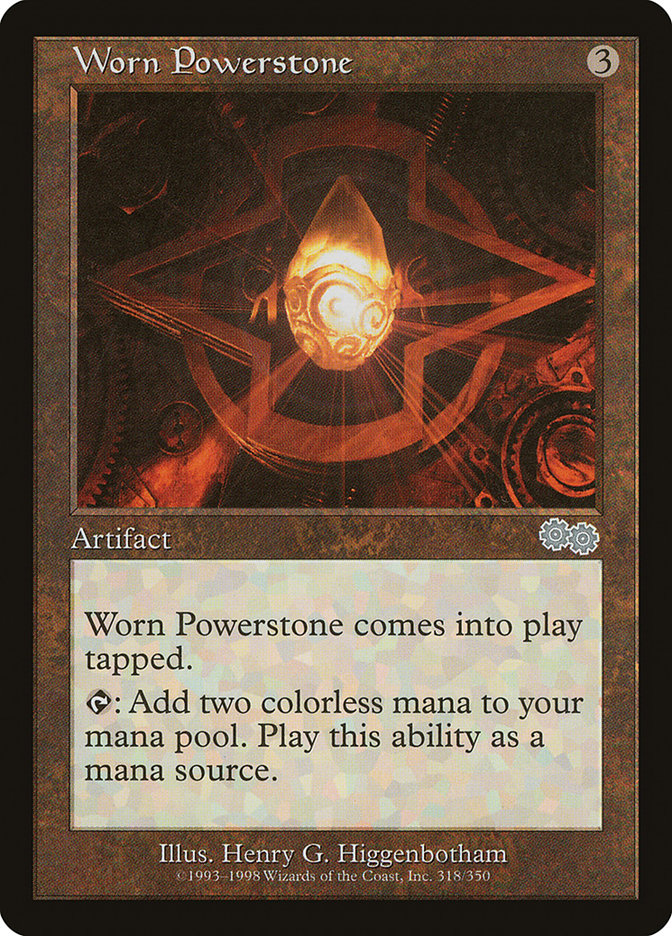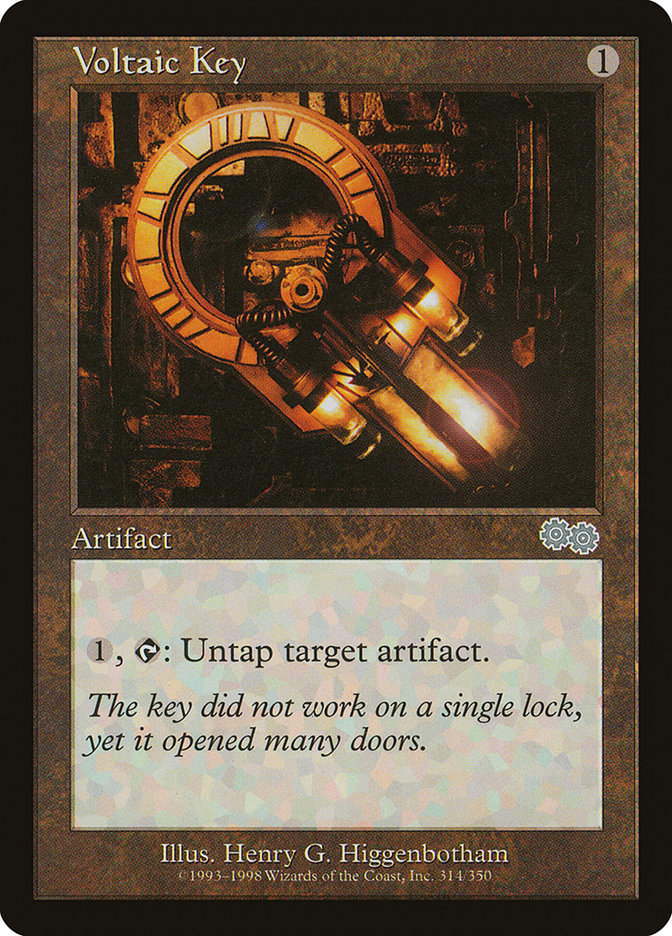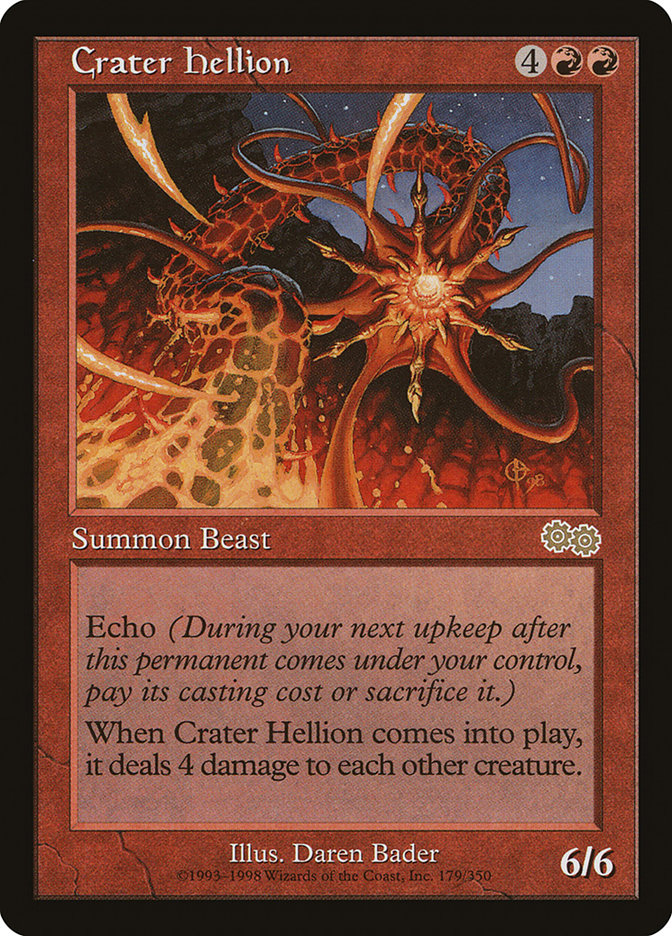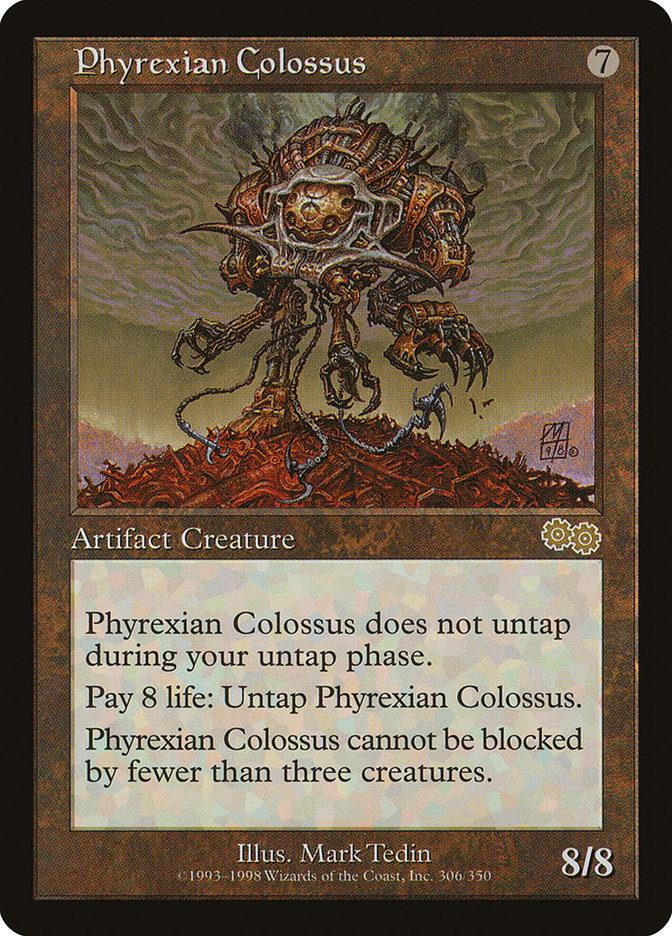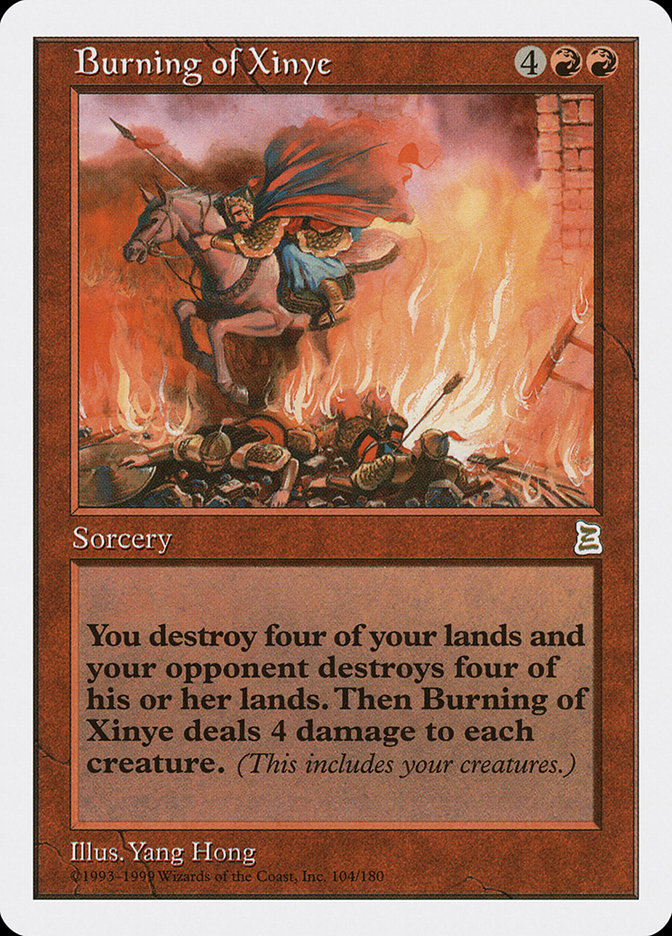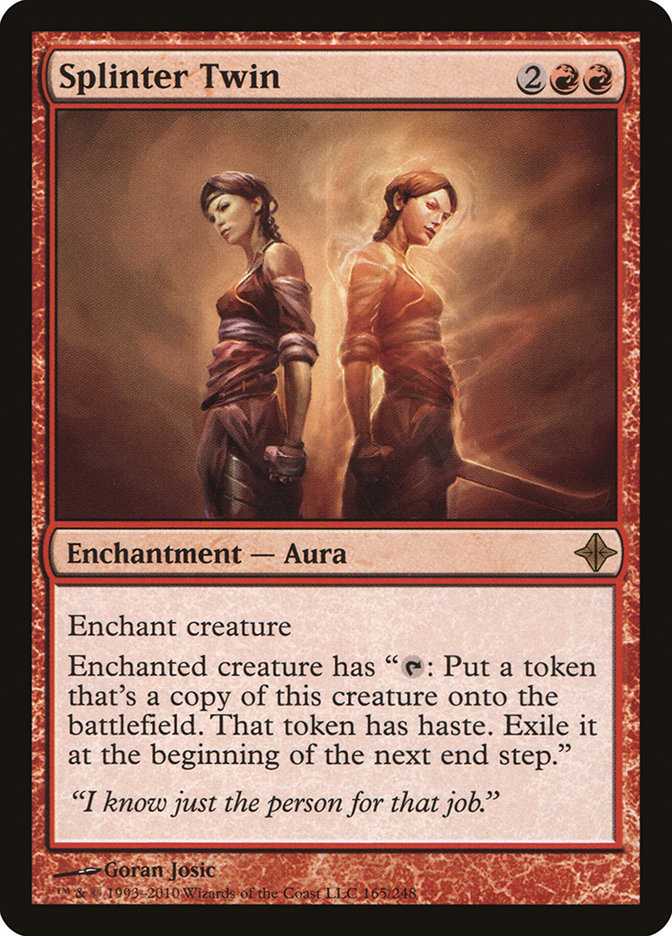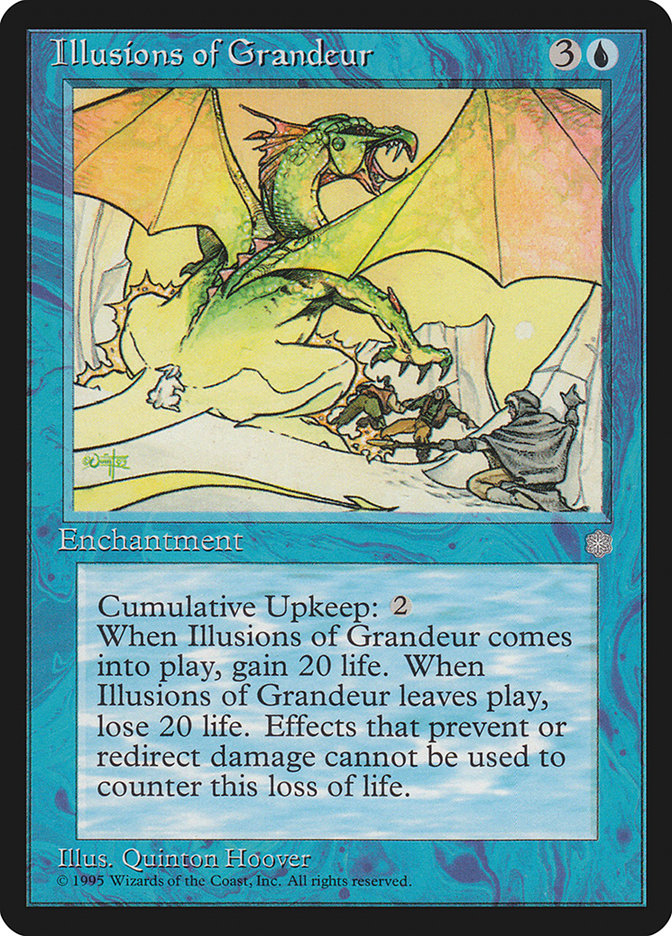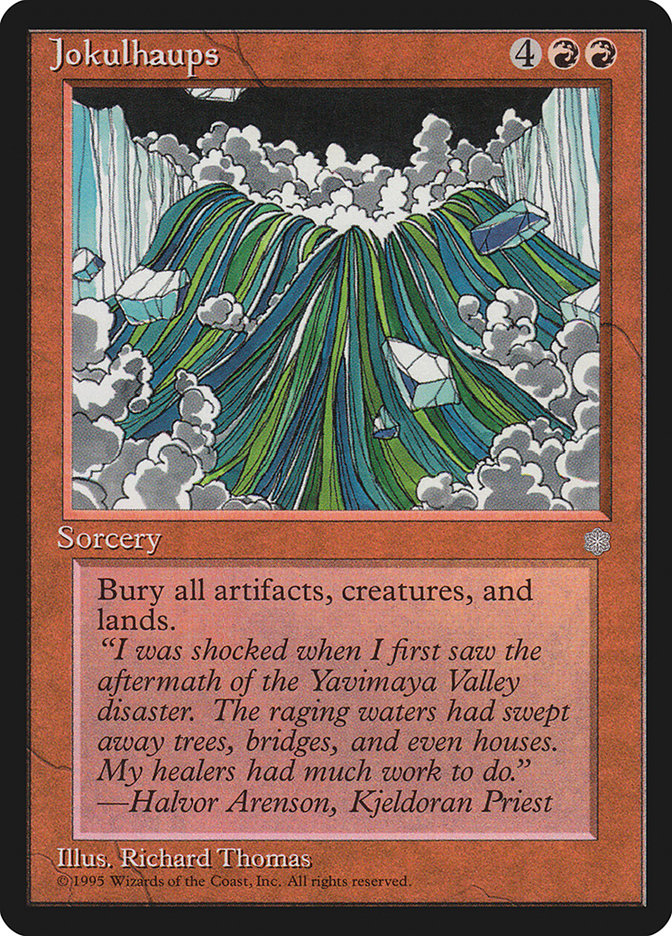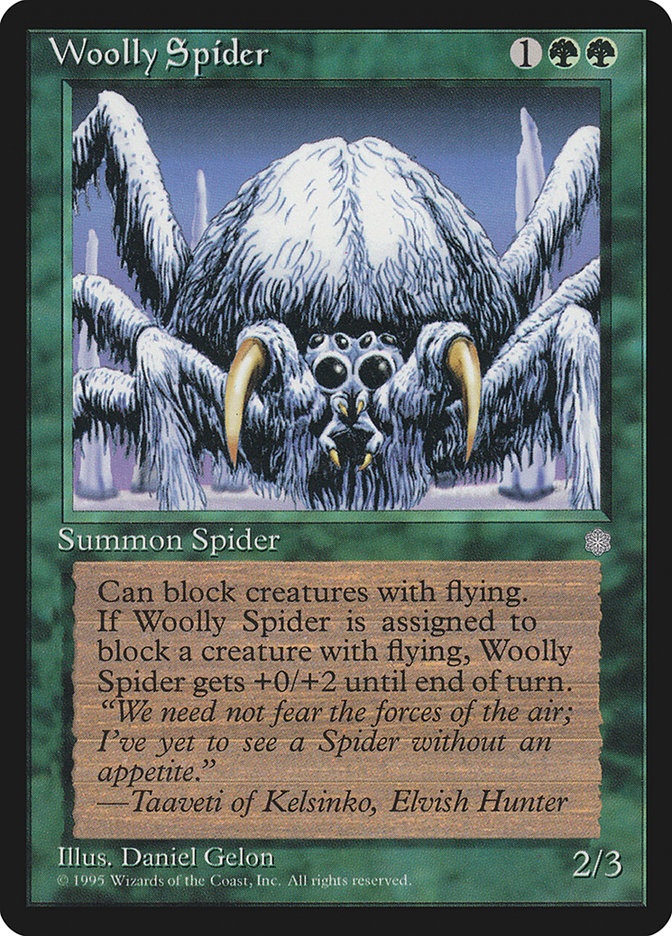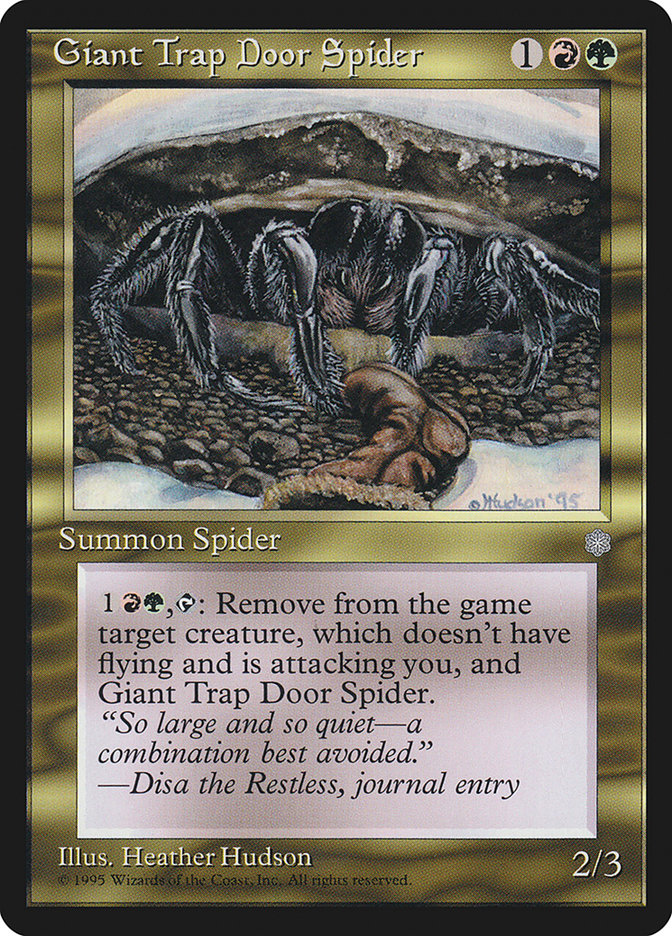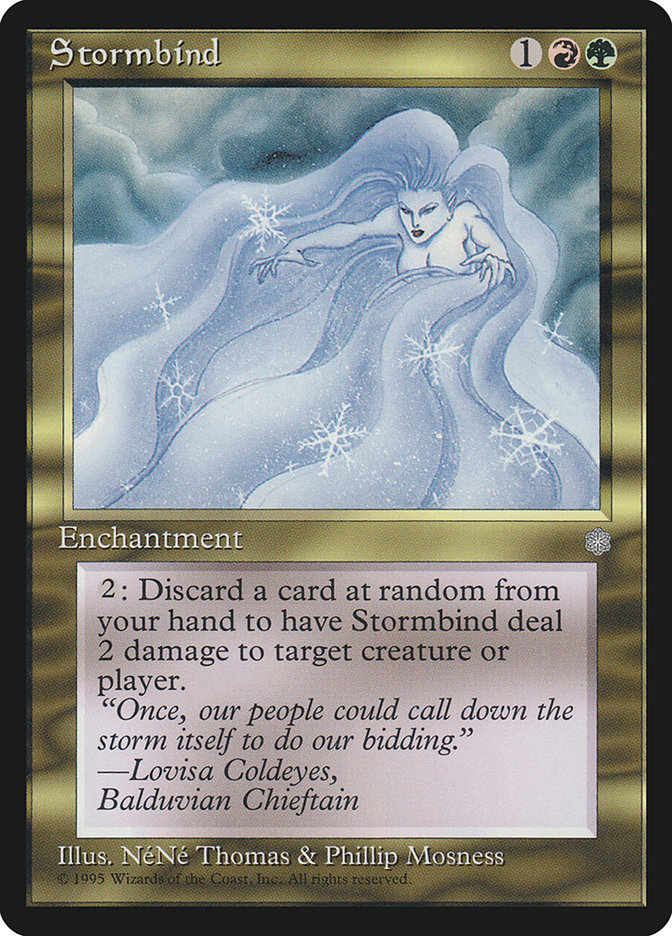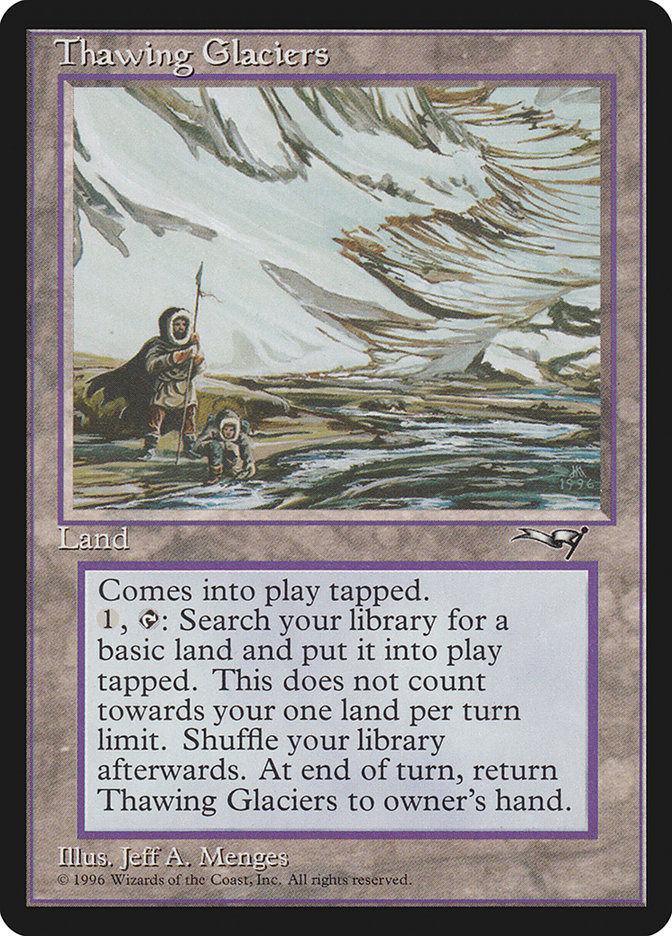The split between which red cards have done best in Standard/Block vs
Modern/Legacy produces lists with a lot of cards that wouldn’t be on the
other…
But not always…
#15: Young Pyromancer
Young Pyromancer is that rare “role-player across all formats.” It doesn’t
matter if you’re drafting, playing Standard, Modern, Legacy, or Vintage.
Young Pyromancer is a fine tournament caliber roleplayer in all formats.
In Standard, Young Pyromancer was sometimes an alternate victory condition
for blue decks, but other times a proactive threat for burn heavy red
decks, such as Matt Sperling’s top 8 list from PT Portland 2014:
Creatures (9)
Lands (24)
Spells (27)

Young Pyromancer helped enable Sperling to play either of two modes:
-
Midrange/Red Control – When facing opponents with lots of
creatures, this list would have to play a makeshift control game at
times. It wasn’t always fast enough to just straight up race, Lava
Spike style; however, Young Pyromancer is exactly the kind of card
that can generate a big enough advantage to actually take over the
game a little. If nothing else, threats spread across many bodies
limited exposure to the extremely popular one-for-one removal that
was so popular at the time. It didn’t need to deal twenty to “take
over the game,” just enough to get them into burn range. -
Burn – When facing opponents relatively short on creatures, Young
Pyromancer played naturally as a part of a plan involving just
playing lands and passing turns, accumulating resources. Then, when
you’ve got a fair bit of mana, you can drop the Young Pyromancer
and rattle off a couple spells in the same turn.
The more powerful the format, the more Young Pyromancer is primarily
slotted into a tempo-oriented blue aggro or aggro-control role. This can
frequently be merely in a sideboard capacity (particularly in combo or
control decks seeking to switch gears), but it can also just be a solid
threat for Delver decks of all shapes and sizes.
Once you get into Legacy and up, Cabal Therapy becomes a pretty major
upgrade to Young Pyromancer’s kit.
Cabal Therapy has such perfect synergy with Young Pyromancer. First of all,
just making two tokens for only a single mana and a single card is already
exciting. What’s more, the “payoff” Young Pyromancer gives you is perfectly
suited to paying Cabal Therapy’s Flashback cost. Even if you have no
knowledge of your opponent’s hand, casting Cabal Therapy gives you the
token you need to flash it back, now with perfect info. That effectively
makes it a Thoughtseize without the life, but that can hit multiples and
might hit a card on the way in. It even leaves you with a 1/1 from flashing
it back, putting you way ahead in a lot of ways.
Creatures (13)
Lands (18)
Spells (29)

Gitaxian Probe was especially well used with Young Pyromancer, giving you a
cantrip Memnite, as well as info needed to make Cabal Therapy backbreaking.
While Gitaxian Probe is finally banned, I’m not going to be surprised in
the least when Peek starts showing up…
#14: Past in Flames
Yeah, because it’s totally normal to give Yawgmoth’s Will Flashback…
Okay, admittedly, Yawgmoth’s Will also plays artifacts, creatures, lands,
etc. Nevertheless, Past in Flames hits the two most exploitable in powered
formats and is almost seems too perfectly engineered to be a part of Gifts
Ungiven packages.
Basically since its inception, Past in Flames has been used almost
exclusively as a way to turn Gifts Ungiven into a “one-card combo.” You can
end step a Gifts Ungiven and find three red rituals and a Past in Flames;
whatever they give you, you’re basically Yawgmoth’s Willing on your turn.
Once you factor in creatures like Goblin Electromancer and Baral, Chief of
Compliance, it’s pretty trivial to win turn four if left unchecked. Turn
two Electromancer, turn three Gifts, and then turn four, you’re off to the
races (particularly if you were able to sneak in a couple cantrips on turn
one, or in the case of Gitaxian Probe or Manamorphose, whenever you want).
Creatures (3)
Lands (14)
Spells (43)
- 2 Lightning Bolt
- 1 Mountain
- 3 Island
- 4 Sleight of Hand
- 4 Serum Visions
- 4 Desperate Ritual
- 3 Grapeshot
- 4 Manamorphose
- 4 Pyromancer Ascension
- 4 Pyretic Ritual
- 4 Gitaxian Probe
- 3 Past in Flames
- 3 Faithless Looting
Sideboard

As good as Gitaxian Probe has been in lists like this, Manamorphose is even
better. Whereas Gitaxian Probe costs zero, Manamorphose costs negative one
(!).
As for Vintage, Past in Flames can be combined with all sorts of restricted
cards and eventual restricted cards, almost single-handedly adding a combo
dimension to control decks or giving extra staying power to dedicated combo
decks that might want to try “going off” multiple times against blue decks.
Lands (12)
Spells (48)
- 1 Brainstorm
- 1 Fastbond
- 1 Vampiric Tutor
- 1 Yawgmoth's Will
- 4 Force of Will
- 1 Wheel of Fortune
- 1 Demonic Tutor
- 1 Island
- 1 Time Walk
- 4 Dark Ritual
- 1 Ancestral Recall
- 4 Gush
- 1 Brain Freeze
- 1 Mind's Desire
- 1 Black Lotus
- 1 Lotus Petal
- 1 Mox Emerald
- 1 Mox Jet
- 1 Mox Ruby
- 1 Mox Sapphire
- 1 Empty the Warrens
- 1 Ponder
- 4 Manamorphose
- 4 Preordain
- 4 Gitaxian Probe
- 2 Past in Flames
- 3 Treasure Cruise
Sideboard

Sure, Gitaxian Probe, Preordain, Gush, Treasure Cruise… what’s the problem?
On second thought, let’s not go to Vintage. ‘Tis a silly place.
#13: Wildfire
Wildfire was an absolute monster in its day, and would be absolutely busted
these days. Getting so much battlefield sweep and so much land destruction
so efficiently can be quite warping, especially when it’s possible to
combine it with artifact mana (as opposed to creature-based mana, like that
of Llanowar Elves, which is easily torched by Wildfire).
Creatures (3)
Lands (25)
Spells (32)

Ahhh, yes. Four Tinker, four Tolarian Academy…
While Tolarian Academy and Tinker are obviously not okay, Wildfire helped
in those battles, too. For instance:
Maybe we were on the draw and our opponent played a turn one Academy (which
was a popular play in that era, since the old Legend rule meant the other
player would be locked out of playing theirs).
Turn 1: Voltaic Key
Turn 2: Temporal Aperture
Turn 3: Worn Powerstone
Turn 4: Wildfire, then drop our own Tolarian Academy and Tinker up a
Colossus (and we’ve even got the Voltaic Key to not need to pay life to
untap it).
Crater Hellion and Phyrexian Colossus spoke to a common theme among
Wildfire decks.
If you’re going to play mid-sized or big creatures in a Wildfire deck, you
generally want them to live through Wildfire.
Creatures (8)
Lands (7)
Spells (45)
- 4 Grim Monolith
- 4 Cursed Scroll
- 13 Mountain
- 4 Wildfire
- 4 Temporal Aperture
- 2 Mishra's Helix
- 4 Fire Diamond
- 2 Worn Powerstone
- 4 Voltaic Key
- 4 Thran Dynamo
Sideboard

Kai’s Covetous Dragon’s were big enough to live through a Wildfire, and
Masticore could regenerate (if you even really need it, which frequently,
he didn’t, letting it go and dropping another, or just relying on Cursed
Scrolls and Temporal Apertures to secure a game-winning advantage).
I’m gonna lump Burning of Xinye in with Wildfire, especially since it’s
never really had its own day in the sun. While it may have the same printed
text as the Portal Wildfire, it has never received the errata
Wildfire has (which needed to match its Urza’s Saga text).
Instead, Burning of Xinye really does involve the lands you choose, rather
than sacrificing them, which could, in theory, be combined with stuff like
Darksteel Citadel.
#12: Splinter Twin
Splinter Twin was obnoxious in Standard and probably would have been
remembered for being even more of a problem, if not for Caw-Blade hogging
the spotlight.
In Modern, it was a defining force from the format’s inception, all the way
up to its eventual banning.
Creatures (11)
Lands (23)
Spells (26)
- 1 Disrupting Shoal
- 1 Lightning Bolt
- 1 Sleight of Hand
- 4 Remand
- 2 Pact of Negation
- 4 Ponder
- 3 Firespout
- 2 Dispel
- 4 Splinter Twin
- 4 Preordain
Sideboard

A two-card combo that wins the game for three plus four mana is already
pretty intense.
But to get to play the three mana part on your opponent’s end step?
I played Twin in that Pro Tour, but I don’t miss it. It’s one thing to have
such a reliable and resilient combo deck that kills so fast, but you
shouldn’t also be able to just fill the rest of your deck with cantrips,
Counterspells, interaction, and generally just all the most efficient cards
you could want anyway. Why ever play control when Twin was just the best
kill card for a control deck anyway?
#11: Jokulhaups
If you thought Wildfire was ridiculous, try playing in a format where
Jokulhaups is going on! It’s like a Wildfire, except for infinity. It kills
all the creatures, all the lands, and even for good measure, all the
artifacts. To say this slowed things down would be an understatement. How
fast can you recover from a Jokulhaups? Well, even in a format like Ice Age Block Contructed, sometimes a Fyndorn Elf leading into a
Woolly Spider or Giant Trap Door Spider could be a lethal threat.
With today’s threats, the snowballing advantages of whatever followed would
be completely unreasonable to fight, and that’s to say nothing of the
possibility of combining it with Planeswalkers.
Creatures (21)
- 4 Woolly Spider
- 2 Storm Shaman
- 4 Giant Trap Door Spider
- 4 Deadly Insect
- 4 Fyndhorn Elves
- 1 Gorilla Shaman
- 2 Orcish Cannoneers
Lands (4)
Spells (35)
- 7 Forest
- 1 Pyroclasm
- 3 Pillage
- 7 Mountain
- 2 Giant Growth
- 4 Incinerate
- 2 Lava Burst
- 1 Jokulhaups
- 2 Stormbind
- 4 Urza's Bauble
- 2 Lodestone Bauble
Sideboard

While Olle did not have access to Planeswalkers, he did get to use
Stormbind, which also neatly avoided destruction at the hands of
Jokulhaups.
Stormbind was especially nice for stopping Ivory Gargoyles dead in their
tracks.
Ivory Gargoyle was a common threat to pair with Jokulhaups in that event,
since it was one of the very few ways to sweep the battlefield and keep a
threat. However, if one ever encountered a Stormbind, they might need to
use its 4W ability to exile it… assuming no one had cast Jokulhaups and
made that kind of mana an unobtainable luxury.
Now, even a single Llanowar Elves is game over, since Stormbind ensures the
Gargoyle player is never drawing another card!
This sequence was not as farfetched as it might sound. It even came up
against finalist Sean Fleischman, featuring Ivory Gargoyles in his
Four-Color Control deck:
Creatures (4)
Lands (14)
Spells (43)

With 30 land (!), Fleischman’s plan for dealing with a format warped around
Jokulhaups was to just keep hitting his land drops, and of course, the most
important land for this plan was Thawing Glaciers:
His list was so teched out, it even featured Mind Warp to rip apart the
hand of opposing Jokulhaups players trying to build up.
This list was super sweet, and I used a similar style to qualify for my
very first Pro Tour. Don’t get me wrong: I love a lot of what’s going on
here, but I didn’t end up having room for sweet cards like Lim-Dul’s Vault.
Instead, I preferred a different form of library manipulation I found to
synergize nicely with Thawing Glaciers…
Those were different times, innocent times…


